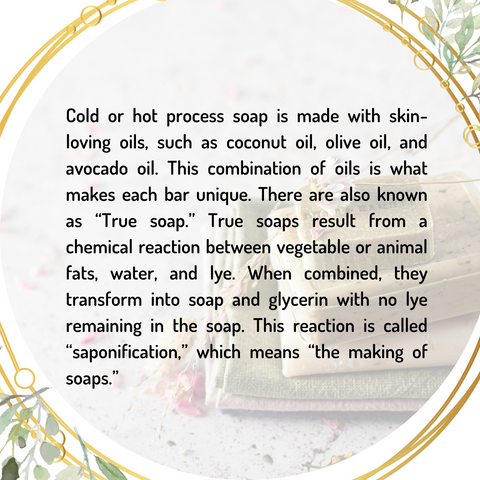Process of making soap

There are several ways to make handmade soaps. Some are the "from-scratch" method, and others will be a short process that cuts our time or prevents us from handling lye. Each method has its pros and cons and is better for some purposes. As a user, you would know how handmade soap is made, which would be the best to buy and use.
- MELT AND POUR

It is the simplest method of all. Melt, and Pour is a method of making soap from the existing bases and functional ready. The pre-existing soap base will be melted, added with dye, desired ingredients, and herbs. Once it's mixed, it will be poured into the mold and let it to be hardened.
- COLD PROCESS

Cold-processed soap is a process of making soap from scratch. It is made by mixing sodium hydroxide (lye) with water, blending it with fatty oils, and adding essential oils and natural colorants like clays. They are then poured into molds and take 24 hours to become (saponify). No additional heat is used to facilitate the saponification process, and it takes about 18-24 hours to complete. Cold process soap takes about 4-6 weeks to cure. The soap can be used before the curing period, but it will last longer in the shower with a complete cure.
- HOT PROCESS

The hot process is similar to the cold process, except it is used to speed up the saponification process with hot process soap, making an external heat source issued to accelerate saponification. The external heat source can be a crockpot, a double boiler, or the oven. Saponification will be complete in approximately 2 hours.
- REBATCH

Also known as French Milling or rebatching, this type of soapmaking combines all other methods. In the simples form. Most milled soap makers create their cold process or hot process soap and then remake it by shredding or grating the soap down, melting it by applying heat, and adding color, scent, or other additives before molding it. This method is usually done by saving all the soap scraps ad rebatching them to make new soaps.
Glimpse on our soap

As stated above, soap making can be done by four different processes. The method we chose determines the quality of our soap. We opted for cold process soaps to make our "FREE." Cold process soaps are better for the environment, healthier for the skin, and can be made incredibly moisturizing.
As stated above, soap making can be done by four different processes. The method we chose determines the quality of our soap. We opted for cold process soaps to make our "FREE." Cold process soaps are better for the environment, healthier for the skin, and can be made incredibly moisturizing.



